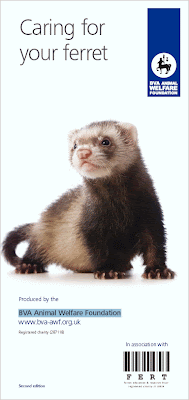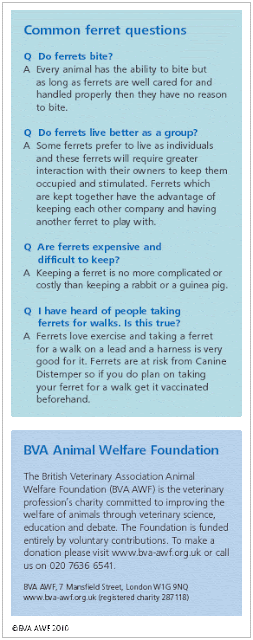As promised, we will keep this blog running for a short while after the conference so we can share some of the resources from the day with you.
Here's a quick breakdown of the results from the survey that we carried out before the conference and which Jonnie Robinson referred to in his session on the day. Thanks very much to the nearly 300 students and teachers who contributed to the survey and thanks to Jonnie for analysing the results and doing so much with them.
Question 1
Male 29%
Female 71%
Question 2
77% of respondents were 16-18
13% were between 26 and 50
Question 3
Question 5
The question on different words used for a range of things (playing truant, soft shoes for PE, the most formal room at home, female parent and the most formal room at home) threw up some very interesting results, including a few joke entries.
In his talk Jonnie Robinson chose to focus on one of these (see below):
more to follow soon...
Info
A blog to help students and teachers get the most out of our A Level English Language conference
Monday, March 28, 2011
Thursday, March 17, 2011
Peace and love!
Thanks so much to everyone who came to our conference - speakers, students, teachers, all of you - and for making it such a great success. Here's a picture of the mighty David Crystal and adoring fans at the end of the conference, sending out peace and love to everyone.
While the conference itself may be over, we'll be keeping this blog running to provide post-conference resources, including links to some of the presentations, follow-up reading and survey results, as well as a link to an evaluation of the conference itself.
While the conference itself may be over, we'll be keeping this blog running to provide post-conference resources, including links to some of the presentations, follow-up reading and survey results, as well as a link to an evaluation of the conference itself.
Tuesday, March 15, 2011
Countdown to the conference...
We're really excited about tomorrow's conference and hope you are too.
If you want to check on any last minute arrangements then have a look here. We'd like to remind you that it all starts at 10.15 and we need everyone in their seats by then. We are going to need to stick very closely to timings on the day so that everyone gets the most out of it, so please try and have a quick look at the programme and if possible bring some lunch with you to avoid having to queue too long during the lunch break.
We're really looking forward to seeing you there tomorrow.
If you want to check on any last minute arrangements then have a look here. We'd like to remind you that it all starts at 10.15 and we need everyone in their seats by then. We are going to need to stick very closely to timings on the day so that everyone gets the most out of it, so please try and have a quick look at the programme and if possible bring some lunch with you to avoid having to queue too long during the lunch break.
We're really looking forward to seeing you there tomorrow.
Monday, March 14, 2011
American English?
With only two days to go until the conference, it's good to see one of our speakers, Jonnie Robinson of the British Library, getting national media coverage for the ongoing research into accents in the UK carried out as part of their Evolving English exhibition.
He'll be telling us more about some of the findings of the BL's huge survey of changing accents on Wednesday but you can read a bit about it here in the meantime.
He'll be telling us more about some of the findings of the BL's huge survey of changing accents on Wednesday but you can read a bit about it here in the meantime.
Wednesday, March 9, 2011
There are many ways in which these texts could be grouped but here are three suggested groups with brief reasons, which you can develop in more detail. As you can see, I’ve highlighted differences as well as similarities and suggested possible sub-groupings - remember that it’s important to do this on task 1 of ENGB1.
Firstly, texts 1, 2 and 4 clearly all have the purposes to instruct and inform. As written texts, 2 and 4 do this through the use of conventional discourse structures (the ‘recipe’ structure of 2 with its front ended imperative constructions and the question-answer structure of 4). Text 1 however, unlike the other two is a spoken text. In this instance, the TV chef is not only speaking but demonstrating as well to a viewer who would be watching her on TV. Consequently she uses a deictic term ‘here’, to refer to something she’s pointing to and which the viewer can see. The informal nature of the programme can be seen in conventional features of informal spoken discourse such as pauses, elision - ‘gonna’ and elliptical constructions - ‘need a bit of oil’. There are other examples of a more informal register such as the way in which she uses personal interjections – ‘if friends come round’ and phrases such as ‘looks a bit scary’. As with most shows of this kind, the intention is to establish and maintain a relationship between the presenter and her audience who may have viewed the programme before and/or will (hopefully) watch it again. There isn’t the need to present a perceived closeness between producer and receiver (or to maintain viewing figures !) in texts 2 and 4 and so the register they use is much more formal.
Another possible grouping would be texts 3, 5 and 6, which all make significant use of images. Text 3 uses an image of a modified action man (an iconic and famous toy) to shock its readership in line with the text’s purpose which is to persuade people to donate. The image of an amputee is used to provoke a strong response and is supported by the accompanying text, which uses hard hitting modification ‘terrible physical and psychological toil’, ‘exceptionally high’ and ‘brave young men and women’. Text 5 also uses an image, this time the fair-trade logo that like the action man doll, the text producer assumes that the reader will recognise. Again this image is used to present an important message. Although the text is advertising the showing of the FAIRTRADE documentary, it is also aiming to promote awareness of FAIRTRADE itself, in a similar way to how text 3 aims to promote awareness of the need to support war veterans. Text 6 however uses images to support a narrative and has the sole purpose to entertain, following the typical discourse conventions of a comic book for younger readers. The images in this text are much more detailed, since they are required to support a narrative.
A third possible grouping is that of texts 3, 4 and 6 which all present and/or challenge widely held assumptions and stereotypes. Text 3 aims to present the harsh reality of war by deliberately challenging the assumption that war is like a game and that soldiers are like action heroes. Similarly, text 4 aims to dispel ideas that people might commonly have about ferrets as well as providing more information on looking after animals through its series of straightforward declarative sentences. Text 6 also challenges ideas about war but in this case does so through its characterisation: the young and naive Charley is placed in contrast to the wiser and realistic Ginger. However, since its readers would be relatively young and its purpose is to entertain, it doesn’t rely on the shock tactics of text 3. Within this group, texts 3 and 4 could be placed into a sub-group of advertisements since they both promote charities and attempt to persuade their readers to donate money to their causes.
Firstly, texts 1, 2 and 4 clearly all have the purposes to instruct and inform. As written texts, 2 and 4 do this through the use of conventional discourse structures (the ‘recipe’ structure of 2 with its front ended imperative constructions and the question-answer structure of 4). Text 1 however, unlike the other two is a spoken text. In this instance, the TV chef is not only speaking but demonstrating as well to a viewer who would be watching her on TV. Consequently she uses a deictic term ‘here’, to refer to something she’s pointing to and which the viewer can see. The informal nature of the programme can be seen in conventional features of informal spoken discourse such as pauses, elision - ‘gonna’ and elliptical constructions - ‘need a bit of oil’. There are other examples of a more informal register such as the way in which she uses personal interjections – ‘if friends come round’ and phrases such as ‘looks a bit scary’. As with most shows of this kind, the intention is to establish and maintain a relationship between the presenter and her audience who may have viewed the programme before and/or will (hopefully) watch it again. There isn’t the need to present a perceived closeness between producer and receiver (or to maintain viewing figures !) in texts 2 and 4 and so the register they use is much more formal.
Another possible grouping would be texts 3, 5 and 6, which all make significant use of images. Text 3 uses an image of a modified action man (an iconic and famous toy) to shock its readership in line with the text’s purpose which is to persuade people to donate. The image of an amputee is used to provoke a strong response and is supported by the accompanying text, which uses hard hitting modification ‘terrible physical and psychological toil’, ‘exceptionally high’ and ‘brave young men and women’. Text 5 also uses an image, this time the fair-trade logo that like the action man doll, the text producer assumes that the reader will recognise. Again this image is used to present an important message. Although the text is advertising the showing of the FAIRTRADE documentary, it is also aiming to promote awareness of FAIRTRADE itself, in a similar way to how text 3 aims to promote awareness of the need to support war veterans. Text 6 however uses images to support a narrative and has the sole purpose to entertain, following the typical discourse conventions of a comic book for younger readers. The images in this text are much more detailed, since they are required to support a narrative.
A third possible grouping is that of texts 3, 4 and 6 which all present and/or challenge widely held assumptions and stereotypes. Text 3 aims to present the harsh reality of war by deliberately challenging the assumption that war is like a game and that soldiers are like action heroes. Similarly, text 4 aims to dispel ideas that people might commonly have about ferrets as well as providing more information on looking after animals through its series of straightforward declarative sentences. Text 6 also challenges ideas about war but in this case does so through its characterisation: the young and naive Charley is placed in contrast to the wiser and realistic Ginger. However, since its readers would be relatively young and its purpose is to entertain, it doesn’t rely on the shock tactics of text 3. Within this group, texts 3 and 4 could be placed into a sub-group of advertisements since they both promote charities and attempt to persuade their readers to donate money to their causes.
Grouping texts: text six
And here is the sixth and final text for your categorising pleasure. It's a page from Charley's War, a comic strip about a young soldier, by Joe Colquhoun in Battle Picture Weekly. Click on the image to see a bigger version of it.
Once you've looked at all six texts from the last two weeks, have a think about ways in which you would group them and the kinds of language methods/ linguistic frameworks you would use to explore these texts. Examiner and author, Marcello Giovanelli will add some comments in a separate post later today.
Once you've looked at all six texts from the last two weeks, have a think about ways in which you would group them and the kinds of language methods/ linguistic frameworks you would use to explore these texts. Examiner and author, Marcello Giovanelli will add some comments in a separate post later today.
Friday, March 4, 2011
Grouping texts: text five
And here is text five. It's a poster for a film screening of Black Gold. There'll be one more text next week and then we'll look at how you might analyse and group these texts.
Wednesday, March 2, 2011
Grouping texts: text four
And here's text four. It's taken from a leaflet produced by the BVA Animal Welfare Foundation (full text can be found here if you decide you like these little chaps and want to have one as a pet).
Tuesday, March 1, 2011
Grouping texts: text three
Here's your 3rd text...
It's an online charity advertisement taken from the website of the Army Benevolent Fund.
It's an online charity advertisement taken from the website of the Army Benevolent Fund.
Subscribe to:
Posts (Atom)







